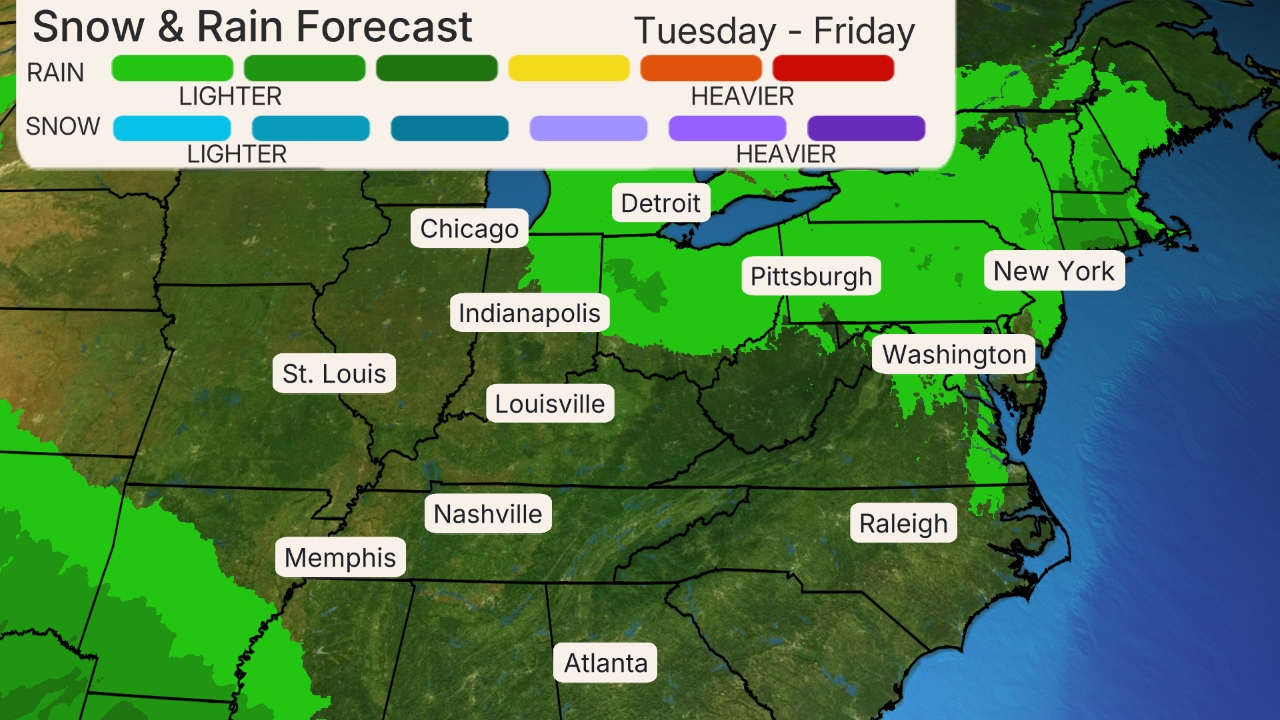Tropical Cyclone Amphan has rapidly intensified into a Category 5 equivalent in the Bay of Bengal as it tracks toward India and Bangladesh, posing a serious threat to one of the world's most vulnerable populations to cyclones.
Amphan (pronounced AM-pun) is currently in the central Bay of Bengal and will track generally north-northeastward into midweek.
Maximum sustained winds in Amphan increased from 75 mph to 160 mph in just 24 hours from Sunday afternoon into Monday afternoon, India time. That means it strengthened from a Category 1 to a Category 5 equivalent on the Saffir-Simpson Hurricane Wind Scale in that time.
Amphan has likely reached its peak intensity and will weaken some because of increasing wind shear and dry air as it approaches eastern India and Bangladesh. Peak impacts from Amphan in those countries will likely occur from later Tuesday through Wednesday, local time.
 Current Storm Status and Projected Path
Current Storm Status and Projected PathStorm Surge, Wind and Rain Threats
A potentially catastrophic storm surge could hit eastern India and Bangladesh even if Amphan's maximum winds decrease before landfall occurs. The center of Amphan should cross the coast between Kolkata, India, and Chittagong, Bangladesh, on Wednesday morning local time.
(MORE: Tragic History of Storm Surge in the Bay of Bengal)
Amphan's large size and extreme intensity will push an immense amount of water northward through the Bay of Bengal. That will allow the water to funnel into the coastline even if Amphan experiences some weakening before landfall.
India's Meteorological Department (IMD) is warning that a surge of up to 13 to 16 feet is possible over parts of West Bengal, with 10 to 13 feet possible into Bangladesh.
Damaging winds and flooding rainfall are also significant threats from Amphan in eastern India and Bangladesh. The IMD has issued a red alert for heavy rainfall and strong winds in West Bengal, which includes Kolkata.
 Rainfall Forecast
Rainfall ForecastTropical Cyclone History of the Bay of Bengal
Last year, Cyclone Fani hit Odisha in May, killing more than 70 people in Odisha and West Bengal. Fani was also an Extremely Severe Cyclonic Storm with maximum sustained wind speeds of 135 mph.
(This section is from Weather Underground's Category 6 blog)
The triangular shape of the Bay of Bengal acts to funnel storm-surge waters into Bangladesh, and the very shallow bottom of the bay allows the surge to pile up to very high heights. Thus, there is good reason to be concerned when a hurricane-strength tropical cyclone gets loose in the Bay of Bengal: Twenty-six of the 35 deadliest tropical cyclones in world history have been Bay of Bengal storms, as seen in Weather Underground's list of the 35 Deadliest Tropical Cyclones in World History (note that since this list was published, research has found that the 1882 Great Bombay Cyclone, which supposedly killed 100,000 people, in reality never occurred). The big killer in all of the most deadly Bay of Bengal cyclones was the storm surge.
During the past two centuries, 42% of the Earth's tropical cyclone-associated deaths have occurred in Bangladesh and 27% have occurred in India (Nicholls et al., 1995). The deadliest storm in world history, the 1970 Bhola Cyclone of 1970, killed an estimated 300,000 to 500,000 when it made landfall in Bangladesh on Nov. 12, bringing a storm surge estimated at up to 10.4 meters (34 feet) to the coast.
The Weather Company’s primary journalistic mission is to report on breaking weather news, the environment and the importance of science to our lives. This story does not necessarily represent the position of our parent company, IBM.
The Weather Company’s primary journalistic mission is to report on breaking weather news, the environment and the importance of science to our lives. This story does not necessarily represent the position of our parent company, IBM.

No comments:
Post a Comment